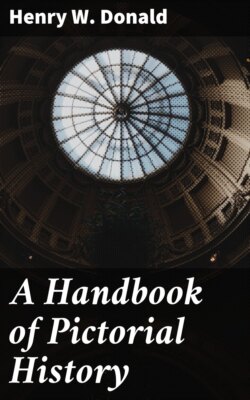Читать книгу A Handbook of Pictorial History - Henry W. Donald - Страница 8
На сайте Литреса книга снята с продажи.
ROMAN POTTERY, Etc.
ОглавлениеTable of Contents
(In the Guildhall Museum, London.)
“After the Roman occupation of Britain, glass and pottery were made here in large quantities, so that the importation of glass, which was carried on at first, ceased to be necessary.”
Samian ware, which was a red glazed ware, was used ordinarily throughout the western half of the Roman Empire. It was manufactured first in Etruria, but afterwards its manufacture was imitated in Gaul. Very little of the genuine Samian ware from Etruria found its way into Britain, but the Gaulish Samian ware was imported in large quantities, and was used throughout the province.
The finer specimens are decorated with design in low relief, of a pictorial character, and the ware was of very good quality, for, 1,500 years after its manufacture, it preserves its colours and its lustre perfectly.
Castor ware, a native product, was made at Castor (Durobrivae), near the River Nen, and includes small vases of rusty copper or slate colour, with white ornament in low relief. “Castor ware is not Roman in character, but rather a local survival of late Celtic art.”
PLATE 5.
(Fig. 1): A Roman tablet of wood. This was covered with a thin coating of wax, upon which the writing was done with a stylus of metal or bone. When the inscription was no longer needed, a hot iron was held over the surface, and a new surface formed on the wax. (Fig. 2): A Roman stylus of iron. (Fig. 3): A Roman amphora. (Fig. 4): An ornamented vase of Cologne ware. (Fig. 5): A bowl of Cologne ware. (Fig. 6): An ewer or water bottle, with indented mouth. (Fig. 7): A deep bowl of Roman pottery. (Fig. 8): A cinerary urn of grey ware for containing the ashes of the dead. (Fig. 9): A decorated urn of Cologne ware. (Fig. 10): A vase of Castor ware, red, with black glazed neck ornaments, decorated with pinkish-white slip. (Fig. 11): A Roman glass hemispherical bowl. (Fig. 12): A drinking cup of thick Samian ware, 3¾ in. high.
